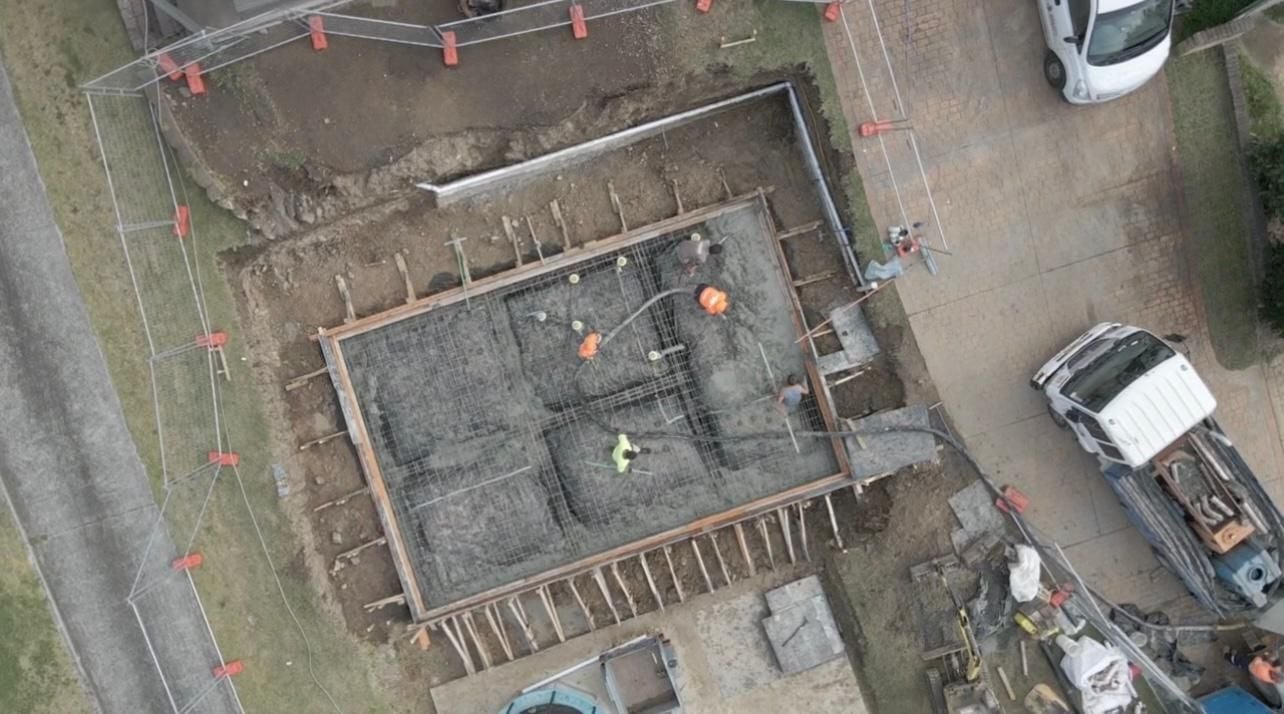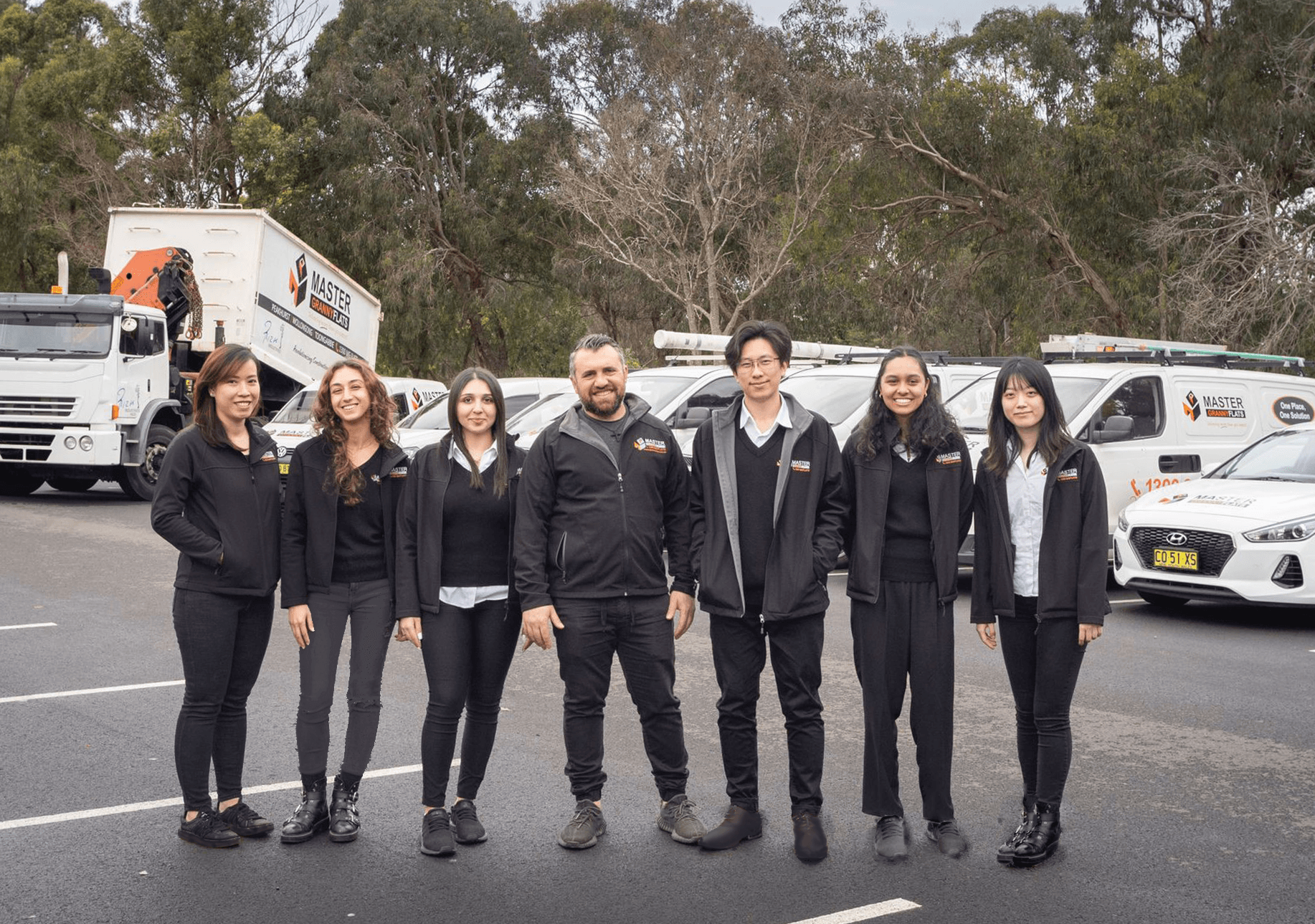Raft Slabs
)
The Advantages of Using Raft Slabs in Granny Flats
Granny flats have become increasingly popular as an excellent way to provide comfortable, independent living spaces for family members or as rental units for extra income. When it comes to building these compact, versatile structures, choosing the right foundation is crucial. Let's explore the benefits of a raft slab , especially when backed by the expertise of "Master Granny Flats' in-house slab team."
When it comes to constructing a solid and enduring structure, the foundation plays a pivotal role. Among the various types of foundations available, raft slabs have emerged as a popular choice for their numerous advantages.
1. Enhanced Load Distribution:
distributes the weight of the building evenly. This uniform distribution helps to minimize settlement, differential settlement, and uneven stress distribution, ensuring greater stability over time.
2. Prevention of Structural Issues:
One of the key benefits of raft slab foundations is their ability to mitigate structural problems. By providing a solid platform, raft slabs can effectively counteract the effects of ground movement, such as soil settlement or expansive clay. They create a stable base that can resist differential movement, reducing the risk of cracks, shifting, or structural damage. This is particularly crucial in areas with challenging soil conditions.
3. Increased Structural Resilience:
designed to withstand external forces, such as earthquakes or floods. The large surface area of the raft slab acts as a buffer, absorbing and dispersing the energy generated by these natural events.
4. Cost-Effectiveness:
While raft slab foundations may require a higher initial investment, they often prove to be cost-effective in the long run. By reducing the risk of structural issues and minimizing maintenance needs, they contribute to lower repair and maintenance costs over the lifespan of the building. Additionally, their durability and resilience can result in higher property value and reduced insurance premiums, making them a wise investment choice
5. In-House Slab Team Expertise:
What sets "Master Granny Flats" apart is our dedicated in-house slab team. With our experts handling the foundation work, we ensure that every project is done right starting from the foundation. Our team's experience and knowledge in working with 25MPa concrete and building raft slabs guarantee the highest quality and adherence to industry standards.
In conclusion, when it comes to building your granny flat, the choice of concrete mix for your raft slab is a critical decision. Using 25MPa concrete, particularly with the support of "Master Granny Flats' in-house slab team," offers numerous advantages. It is particularly well-suited for all sites, making it a practical choice for many granny flat projects. If you're considering building a granny flat, consult with "Master Granny Flats" to benefit from our expertise and ensure your project's success, starting with the foundation. Your choice of slab and an experienced team can significantly impact the longevity and quality of your granny flat, so choose wisely!
Design and Approval Process
)
Step One
Designers order a section 10.7 (2 & 5), Sewer Diagram and a Land Survey of the property once the deposit is paid. It takes approximately 1-2 weeks for these documents to arrive, they are also notified if their job is CDC (private certifier) or DA (council). Once they have been received by our team, we notify the client that we will be starting the design and approval of their granny flat.
If the client has already chosen one of our drawn-out designs or has notified sales regarding their design ideas, this information is the base in which we use when formulating the layout.
Step Two
Once the survey is received, we begin a preliminary draft of the building location and design. Ideally a design meeting with the client is preferred to ensure everything is confirmed and that we comply with the relevant regulations.
Variations to the design, if there are any, are quoted by sales and passed onto the design team to notify the clients of changes/prices. The client approves the layout and design of the build, we will then proceed with the architecture set, showing the elevations and sections of the design. Once the client confirms via email of the finalized architecture set, we begin approval process
Step Three
We then order the structural and stormwater plans from the engineers and obtain relevant documentation, E.g., BASIX, BPA, engineering drawings, DBYD, dilapidation report, building specifications, title search, home warranty, external colours/finishes schedule, arborist or Geotech report, Impact statement reports for Heritage or Aboriginal sites. The relevant documentation depends on the job. For Example, a Flood Zone requires flood advice from council, a flood management plan to see how affected the site is, Geotech report, flood certificate from engineers to be able to build on flood affected site.
After receiving all the relevant documentation, they are uploaded for either the private certifier or council for initial assessment and preparation of approval. Generally, takes 2-3 weeks to be approved by the certifier. DA job approvals are subject to the local council.
Step Four
An email is sent to notify the client and construction team of the approval. Long service levy and insurances are obtained after approval. Since the design is approved, the client’s neighbours are notified of Works to Commence.
Council contribution fees need to be paid by the client to council to proceed with the construction of the design, without this the project manager cannot commence work.
Step Five
A construction set and electrical layout is completed by the designers and finalized with the project manager. Then the construction team and project manager get started on your granny flat.
MGF Construction Process
)
At Master Granny Flats, aside from our easy contract and design process and friendly staff, our concrete raft slabs are the best on the market. We never compromise on quality, our slabs are a testament to this.
We are meticulous in our work to ensure the longevity of the structure, which holds a lifetime guarantee. We have a trained in-house team whose sole job is to ensure consistent, durable, and safe concrete raft slabs for all our clients.
This is how we pour and perfect a raft concrete slab.
Step 1 | Set Out
A surveyor sets out the outer boundaries of the proposed dwelling using surveying equipment.
The slab team then checks the set-out points completed by the surveyor, to ensure the proposed dwelling is constructed in the correct location on the site.
Step 2 | Excavation and Formwork
We commence this stage by excavating the footings around the perimeter as well as the internal footings of the structure using the surveyor's marks. The footings are dug at a minimum of 300mmx300mm. The size of the footings is determined by the structural engineer.
Once the footings have been dug, formwork stage commences which involves plywood being laid against the edge of the footing, creating the permitter of the structure. The plywood is braced by timber as it is being laid, creating an outer support.
Step 3 | Damp proof membrane
Our team then place a black plastic sheet into the footings and all over the ground under the slab.
The edges of the sheets of black plastic have to be lapped and taped because the plastic stops the ground sucking moisture out of the wet concrete before it cures. It also helps stop moisture rising out of the ground and through the concrete.
Step 4 | Steel reinforcement
The foundations and slab are reinforced with steel bars and mesh. The thickness of the steel and mesh is determined by the structural engineer.
The steel bars and mesh need to maintain a cover off the ground which is also determined by the structural engineer. The cover distance is based on the soil type on that particular site.
Step 5 | Pouring the slab
We then pour concrete into all the footings and the slab using concrete trucks and concrete pumps.
The concrete is vibrated as it is being poured to ensure there are no air pockets. The concrete is then smoothed and levelled using a screeding tool and a laser throughout the pour process.
A bull float is used upon completion to raise any excess water to the top layer of concrete and level any imperfections on the visible layer of the slab.
The concrete is then left to dry, which is called curing.
Step 6 | Stripping the slab
The formwork is removed off the edges of the slab and footings.
The concrete raft slab is now complete!
)
)




)